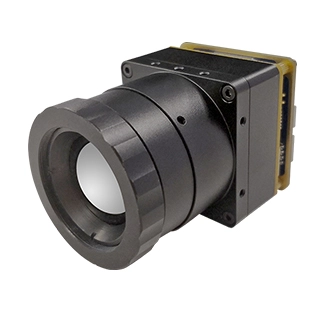Navigating the Financial Landscape of Optical Gas Imaging
Economic Imperatives: The Role of OGI Cameras in Industrial Budgets
In the realm of industrial safety and environmental compliance, Optical Gas Imaging (OGI) cameras have become indispensable tools. As organizations prioritize the adoption of advanced gas detection technologies, the exploration of OGI camera price trends becomes paramount. This passage delves into the economic imperatives that drive OGI camera purchasing decisions, exploring the trends that shape budgets in the pursuit of enhanced vision for gas detection.
Market Dynamics: Fluctuations and Trends in OGI Camera Pricing
The pricing trends of OGI cameras are influenced by the dynamic interplay of market forces. As the demand for these specialized cameras grows across industries such as oil and gas, chemical, and environmental monitoring, market dynamics play a crucial role in shaping pricing structures. Manufacturers respond to market trends by introducing a variety of models with different specifications and price points, allowing organizations to align their budgets with the specific needs of their applications.
Affordability and Accessibility: Trends Toward Diverse Budget Ranges
One notable trend in OGI camera pricing is the drive toward increased affordability and accessibility. As technology matures and competition intensifies, manufacturers are working to offer entry-level models that cater to a broader range of budgets. This democratization of OGI technology ensures that organizations with varying financial capacities can access the benefits of optical gas imaging, fostering a more inclusive approach to industrial safety and environmental monitoring.
Influencing Factors: Understanding the Components of OGI Camera Prices
Features and Specifications: Tailoring Budgets to Technological Needs
A pivotal factor influencing OGI camera prices is the array of features and specifications embedded in these devices. Cameras with higher resolutions, advanced gas detection algorithms, and additional functionalities often come with a higher price tag. Organizations must carefully assess their specific technological needs and align them with their budgetary constraints, finding a balance between cutting-edge capabilities and financial considerations.
Market Competition: Driving Efficiency and Cost-Effectiveness
The competitive landscape within the OGI camera market serves as a driving force behind trends in pricing. Increased competition compels manufacturers to enhance efficiency, optimize production processes, and explore cost-effective technologies. This trend benefits end-users by fostering a market environment where prices are influenced by a commitment to delivering value, performance, and reliability.
Economic Trends and Global Events: External Forces on OGI Camera Prices
External economic factors and global events can exert influence on OGI camera prices. Fluctuations in currency values, changes in material costs, and disruptions in the supply chain can impact the overall pricing structure. Organizations must remain vigilant to these external forces and factor them into their budgetary considerations to navigate potential challenges and uncertainties in the procurement process.
In conclusion, budgeting for vision in the context of OGI camera price trends involves a nuanced exploration of economic imperatives, market dynamics, and influencing factors. As organizations strive to enhance their gas detection capabilities and meet stringent environmental compliance standards, understanding the trends that shape OGI camera prices becomes a strategic imperative. Whether aligning budgets with evolving market dynamics, exploring diverse price ranges for accessibility, or navigating the intricacies of features and specifications, organizations can optimize their investment in optical gas imaging technology. In a landscape where safety and compliance are paramount, the exploration of OGI camera price trends becomes not only a financial consideration but a strategic decision to ensure the vision for a safer, environmentally conscious future remains within reach.




